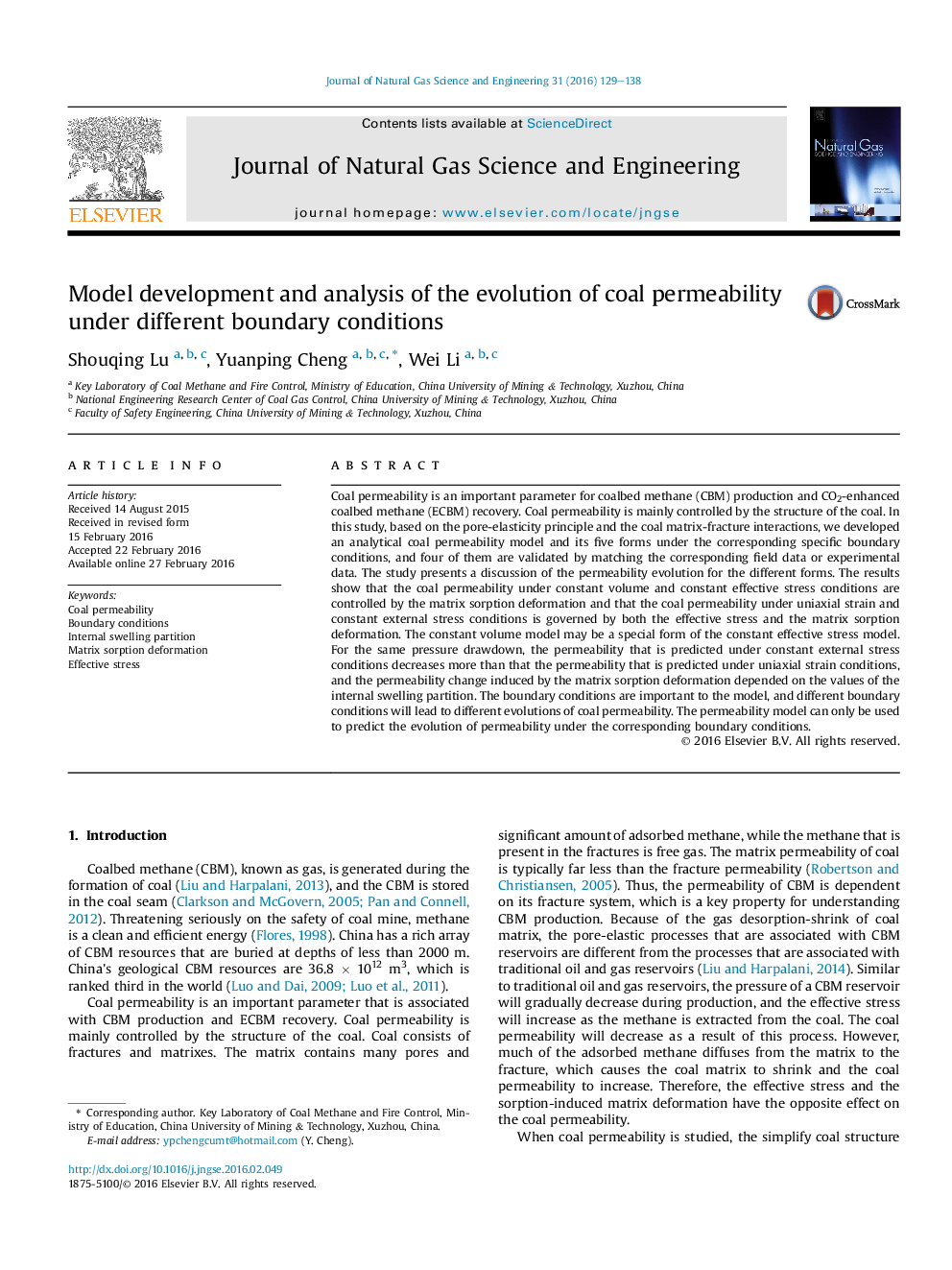| Article ID | Journal | Published Year | Pages | File Type |
|---|---|---|---|---|
| 8128878 | Journal of Natural Gas Science and Engineering | 2016 | 10 Pages |
Abstract
Coal permeability is an important parameter for coalbed methane (CBM) production and CO2-enhanced coalbed methane (ECBM) recovery. Coal permeability is mainly controlled by the structure of the coal. In this study, based on the pore-elasticity principle and the coal matrix-fracture interactions, we developed an analytical coal permeability model and its five forms under the corresponding specific boundary conditions, and four of them are validated by matching the corresponding field data or experimental data. The study presents a discussion of the permeability evolution for the different forms. The results show that the coal permeability under constant volume and constant effective stress conditions are controlled by the matrix sorption deformation and that the coal permeability under uniaxial strain and constant external stress conditions is governed by both the effective stress and the matrix sorption deformation. The constant volume model may be a special form of the constant effective stress model. For the same pressure drawdown, the permeability that is predicted under constant external stress conditions decreases more than that the permeability that is predicted under uniaxial strain conditions, and the permeability change induced by the matrix sorption deformation depended on the values of the internal swelling partition. The boundary conditions are important to the model, and different boundary conditions will lead to different evolutions of coal permeability. The permeability model can only be used to predict the evolution of permeability under the corresponding boundary conditions.
Related Topics
Physical Sciences and Engineering
Earth and Planetary Sciences
Earth and Planetary Sciences (General)
Authors
Shouqing Lu, Yuanping Cheng, Wei Li,
